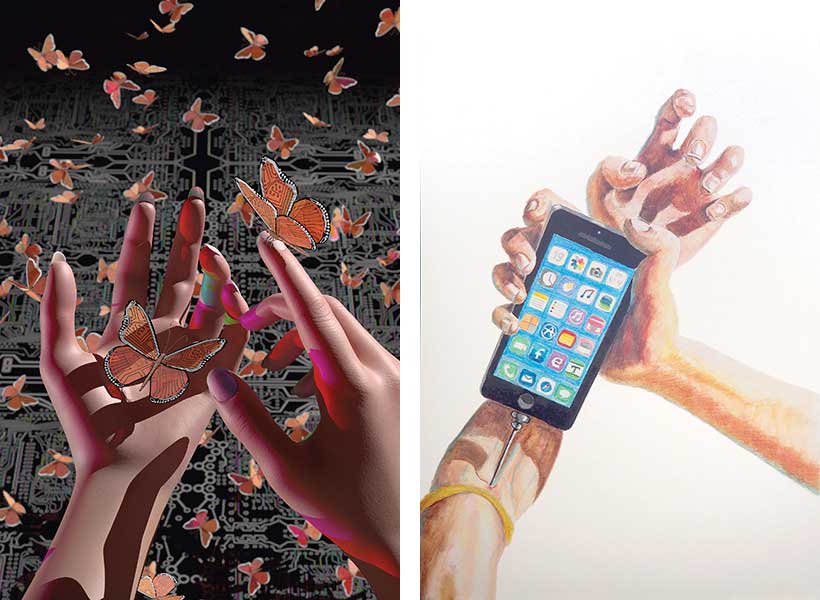University Communications and Marketing
November 14, 2016
Left: Chaos Theory (Butterfly 2.0), 2016. UV print on metal, 36”x24”. Right: Fix, 2016. Mixed media on watercolor board, 30”x20”
MSUB art exhibition explores society’s love-hate relationship with technology
Show runs November 28-December 15; opening reception set for November 29
Contacts:
Patrick Williams, MSUB University Communications and Marketing, 406.657.2270
MSU BILLINGS NEWS SERVICES — Montana State University Billings art student Patrick Williams will present his senior capstone exhibition, “[R]evolution” November 28–December 16 in the student gallery on the first floor of the Liberal Arts building on the Montana State University Billings campus.
An opening reception, free and open to the public, will be held from 5 to 7 p.m., Tuesday, November 29, in the student gallery.
Williams' art education was interrupted when he took a summer job as a graphic artist in 1985, and forgot to quit for nearly 30 years. The digital revolution during that time saw an unprecedented change in the tools available to artists, and Williams changed his skill set and focus along with it.
"I originally planned a concentration in drawing, with a lot of photography and sculpture thrown into the mix. Then, as digital tools appeared, and I was required to learn them for my career as a commercial artist, my fine art began to use more new media and fewer traditional materials,” Williams said. “When I finally decided to return to school and finish my degree, I was conflicted about whether to work in traditional media or in digital; then I realized that the conflict between the two in my own mind was mirrored in society’s larger struggle to adapt to the promise — and peril — that new technology brings.”
The exhibition features two distinct styles. The digital work explores the positive aspects of technology, both in the creation of the work and in its content, which envisions a utopian harmony between humanity and machines; while the traditional work explores some of the pitfalls in our ever-growing dependence on computers and smartphones.
“The two styles of art reflect two very different aspects of my personality and creativity. The digital work is born from my rational, mathematical mind, while the traditional work comes from my intuitive, emotional mind. Both parts demand a creative outlet, so this work lets each half have its own voice,” Williams said.
More information on the exhibition is available online at 2at2.net/revolution

